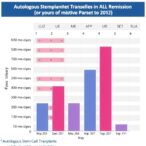
In a groundbreaking development that promises to transform the landscape of lung transplantation, researchers have demonstrated that the hypothermic oxygenated machine perfusion (HOPE) technique is a safe and effective method for preserving donor lungs outside the human body, even when total preservation times approach an unprecedented 20 hours. This advancement, presented by Jitte Jennekens, MSc, an organ perfusionist and transplant coordinator at UMC Utrecht in the Netherlands, at the 2025 International Society of Heart and Lung Transplantation (ISHLT) Annual Meeting in Boston, underscores a pivotal shift in organ preservation science, which could expand the window for lung transplant surgeries and improve outcomes.
Traditionally, donor lungs are preserved via static cold storage, wherein the organs are transported on ice from donor to recipient. However, this approach limits the out-of-body preservation time to a few hours, constraining surgical logistics and potentially compromising lung viability. The advent of ex vivo lung perfusion (EVLP) revolutionized this domain by enabling lungs to be maintained, assessed, and even reconditioned outside the body at normothermic temperatures—approximately 37 degrees Celsius. EVLP involves connecting the lungs to a sophisticated circuit, including a pump and ventilator, through which perfusate fluid circulates, simulating physiological conditions and allowing clinicians to evaluate lung function prior to transplantation.
Despite EVLP’s promise, logistical and physiological challenges remain. Typically, lungs transported on ice undergo a normothermic EVLP period to assess function, then are cooled again on ice until transplant. This intermediate cooling period can impose additional cold ischemic injury, potentially affecting lung quality. Addressing these limitations, the UMC Utrecht team developed the HOPE protocol, a hypothermic yet oxygenated perfusion method to extend lung preservation times safely and maintain viability overnight. By perfusing the lungs continuously at a controlled 12 degrees Celsius after an initial evaluation phase, HOPE eliminates the cold storage window between assessment and transplantation, mitigating ischemic risks and improving preservation fidelity.
The study juxtaposed 12 lung transplant cases utilizing the combined nEVLP-HOPE protocol with a historical cohort of 118 lungs transplanted without any ex vivo lung perfusion between 2017 and 2022. This controlled comparison revealed no lung rejections in the HOPE group, and importantly, short-term post-transplant outcomes such as graft function and recipient recovery were comparable between groups. These findings suggest that HOPE can safely extend total preservation time to nearly 20 hours without detrimental impact, offering substantial logistical benefits for transplantation centers and potentially expanding the donor pool.
One of the critical advantages of the HOPE method lies in its ability to maintain metabolic quiescence while providing oxygen and nutrients, balancing the lungs’ reduced temperature with sufficient perfusion to prevent cellular injury. This contrasts with normothermic EVLP, which, while physiologic, entails higher metabolic demand and rapid accumulation of metabolic waste. The hypothermic environment slows metabolism, reducing oxygen consumption and prolonging viability, while the oxygenated perfusate prevents hypoxic damage. This synergy enhances preservation quality beyond what conventional cold storage or normothermic perfusion alone can achieve.
Notably, the ability to prolong organ preservation addresses a chronic challenge in transplantation medicine: the geographical and temporal limitations separating donor organ retrieval and recipient implantation. With HOPE, lungs can be preserved overnight, facilitating daytime surgeries that align with optimal surgical team availability and hospital resource allocation. This could minimize the need for emergency nighttime procedures, reducing surgical fatigue and potentially improving patient outcomes. Furthermore, extended preservation windows allow for enhanced organ evaluation, therapeutic interventions such as anti-inflammatory or regenerative agents, and better recipient matching.
The study’s success with HOPE also fuels optimism regarding the expansion of ex vivo perfusion techniques to other organ systems. While HOPE is already established for liver and kidney preservation, its application in lung transplantation has thus far been limited. Demonstrating safety and efficacy in this context opens the door for robust clinical trials, refinement of protocols, and broader adoption in transplant centers worldwide. This holistic approach to organ preservation aligns with the growing trend in transplantation toward organ optimization rather than mere preservation, transforming donor organs from passive entities into actively managed grafts.
Jennekens remarked on the broader implications of this work, emphasizing the importance of tailoring preservation strategies to the specific characteristics of donor lungs. Each donor organ may respond differently to perfusion techniques based on variables such as donor age, comorbidities, and cause of death. Understanding these nuances will be critical for customizing perfusion protocols, maximizing organ utilization, and improving patient prognoses. This precision medicine approach signifies the future trajectory of transplantation, moving beyond a “one size fits all” paradigm.
The data also underscored that by integrating HOPE following an initial normothermic assessment, transplant teams can combine the advantages of functional evaluation with extended preservation. The initial nEVLP period confirms lung viability and function under physiologic conditions, while subsequent hypothermic perfusion preserves the organ without the deleterious effects of repeated cold ischemic intervals. This hybrid strategy represents a pragmatic and innovative pathway to optimize lung transplant logistics and outcomes.
Looking forward, Jennekens and her colleagues envision a future where extended perfusion times are utilized not only for preservation but also as therapeutic windows. During prolonged ex vivo perfusion, lungs can be treated with anti-inflammatory agents, gene therapies, or cellular therapies to repair injury, modulate immune responses, and enhance graft quality prior to implantation. Such therapeutic interventions could significantly improve outcomes in recipients with high immunologic risk or marginal donor lungs, expanding transplant eligibility and success.
In conclusion, the HOPE protocol presents a monumental stride in lung transplantation, blending bioengineering and clinical science to transcend previous preservation limitations. By enabling safe lung preservation for nearly 20 hours, this approach offers transformative possibilities for surgical planning, organ utilization, and patient outcomes. As the field moves toward integrating advanced preservation technologies, hypothermic oxygenated machine perfusion stands out as a beacon of innovation, poised to redefine the future of thoracic organ transplantation.
Subject of Research: Lung preservation techniques and lung transplantation outcomes
Article Title: Hypothermic Oxygenated Machine Perfusion (HOPE) Extends Safe Preservation Time for Donor Lungs to Nearly 20 Hours
News Publication Date: 27 April 2025
Web References: Presented at the 2025 ISHLT Annual Meeting, Boston
Keywords: Lung transplantation, Hypothermic oxygenated machine perfusion, Ex vivo lung perfusion, Organ preservation, Transplant logistics, Donor lungs, Normothermic EVLP, Hypothermic perfusion, Organ optimization, Transplant outcomes, Thoracic transplantation, Machine perfusion
Tags: donor lung preservation techniquesex vivo lung perfusion benefitshypothermic oxygenated machine perfusionimproving lung transplant outcomesinnovative transplant coordination methodsInternational Society of Heart and Lung Transplantationlung transplantation advancementslung viability assessmentorgan preservation science breakthroughspreserving lungs for 20 hourssurgical logistics in lung transplantationUMC Utrecht research developments


